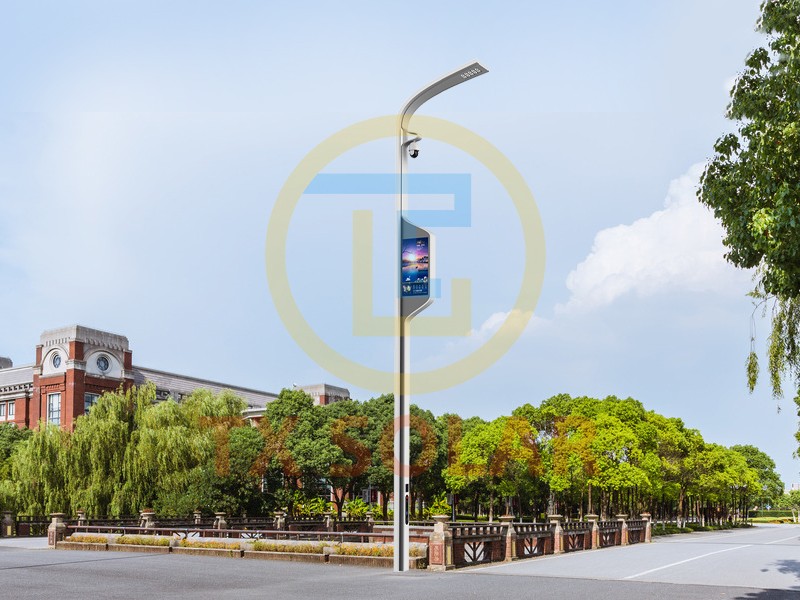Smart light poles are a technological advancement that transforms traditional street lighting into multifunctional devices. This innovative infrastructure combines street lighting, communication systems, environmental sensors, and many other features to enhance the functionality and efficiency of cities. In this article, we explore the various functions of a smart pole and how it can help create smarter, more sustainable urban environments.
Functions of smart light poles
One of the key functions of smart light poles is street lighting. Thanks to advanced LED technology, smart light poles provide better lighting quality while consuming significantly less energy than traditional street lights. Not only does this help reduce power consumption and lower costs, but it also improves visibility and thus improves street safety. Additionally, smart poles can be equipped with motion sensors to detect motion and adjust the intensity of the light accordingly, further saving energy during periods of low activity.
In addition to street lighting, smart light poles are the basis for a range of communication systems. These poles can be equipped with wireless access points and small cell technology to enhance connectivity in urban areas. By providing a reliable, faster internet connection, the Smart Pole enables residents, businesses, and visitors to stay connected and access information anytime, anywhere. Additionally, these communication capabilities facilitate the deployment of smart city solutions, such as real-time traffic management, smart parking, and environmental monitoring.
Another important aspect of smart poles is their ability to improve public safety. By integrating surveillance cameras and sensors, the smart pole can monitor the surrounding environment and detect any suspicious activities or threats. These poles can play a vital role in enhancing security in public places, especially at night when criminal activity is more likely to occur. Footage captured by the cameras can be transmitted in real-time to law enforcement agencies, enabling faster response and reducing crime rates.
In addition to lighting and safety measures, smart poles are also equipped with various sensors to collect environmental data. These sensors can monitor air quality, temperature, humidity, and noise levels, providing valuable information for urban planning and resource management. By collecting real-time data, city authorities can take proactive steps to improve air quality and reduce pollution, ultimately creating a healthier, more sustainable environment for residents.
In addition, smart poles can also serve as charging infrastructure for electric vehicles (EVs). With the increasing popularity of electric vehicles, it is crucial to provide convenient and easy-to-use charging stations. Smart poles can have built-in EV chargers, allowing EV owners to conveniently charge their vehicles while parked on the street. This not only encourages EV adoption but also relieves pressure on existing charging infrastructure.
In conclusion
smart poles provide numerous functions that contribute to the development of smart and sustainable cities. From efficient street lighting and enhanced communication systems to improved public safety and environmental monitoring, these innovative structures play a key role in changing the urban landscape. By adopting smart pole technology, cities can increase overall efficiency, reduce energy consumption, and create a better quality of life for residents.
If you are interested in smart light poles, welcome to contact smart pole manufacturer Tianxiang to read more.
Post time: Jul-06-2023





